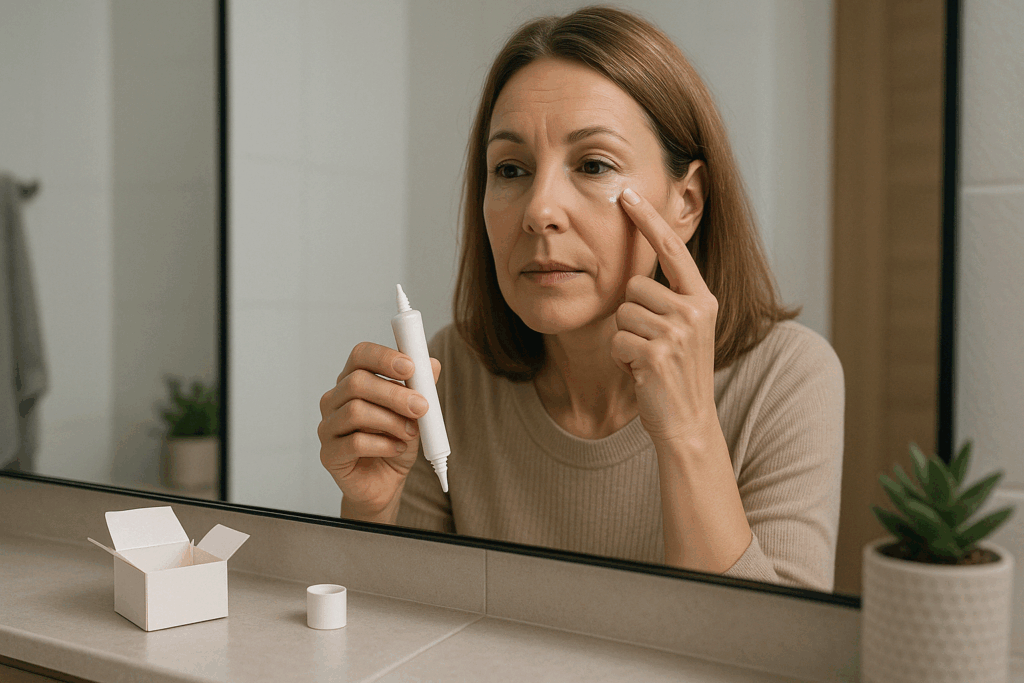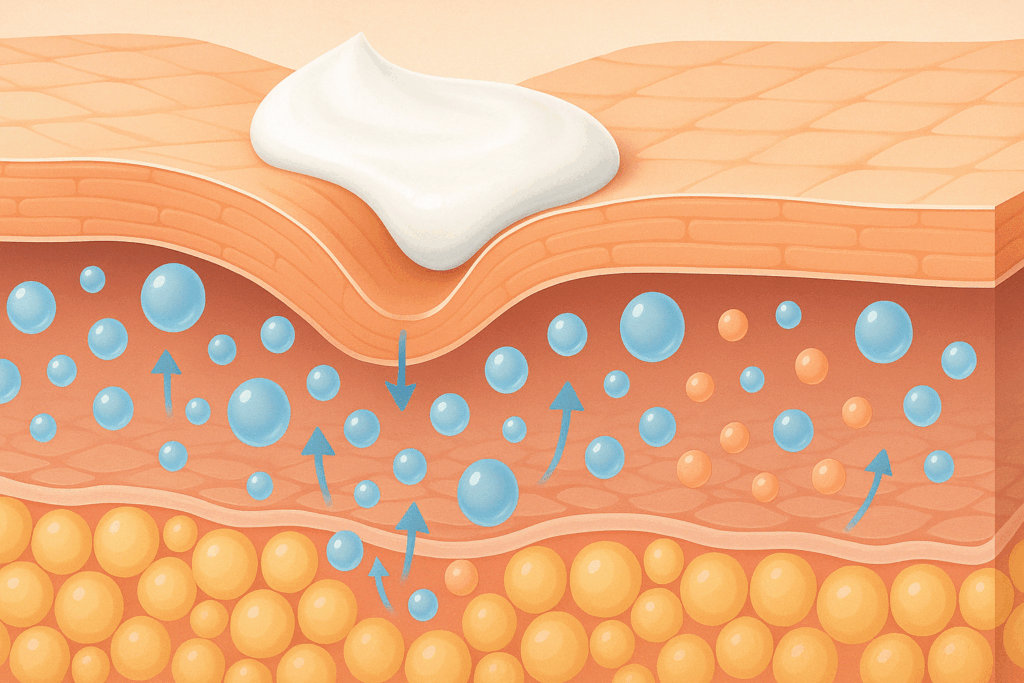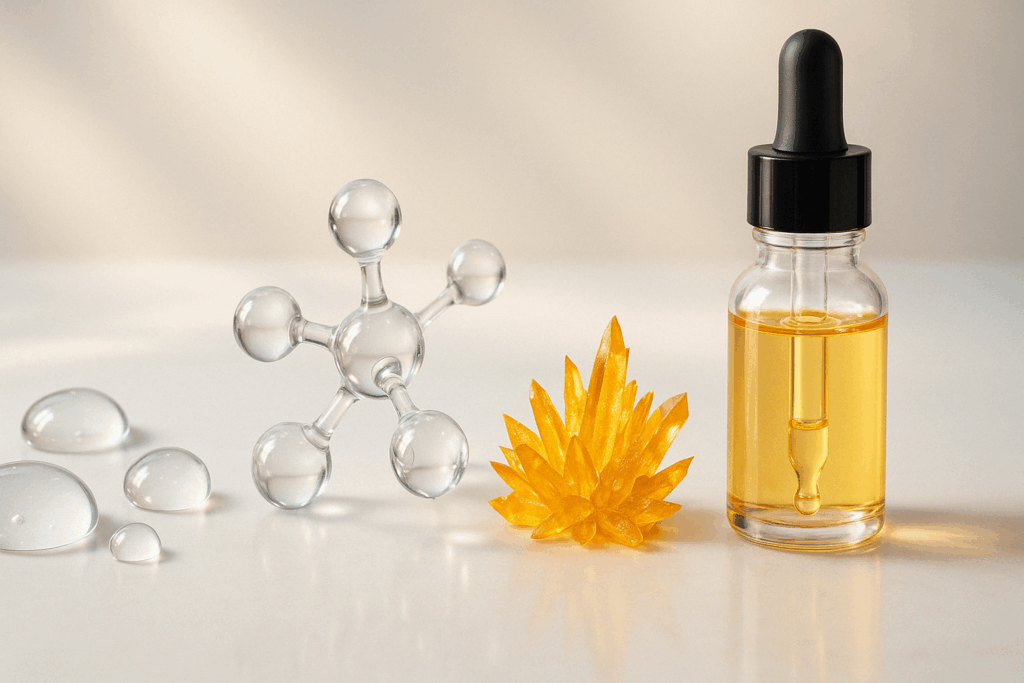In the pursuit of smoother, more youthful-looking skin, the market for non-invasive anti-aging products has flourished, with wrinkle fillers at the forefront of that surge. Unlike injectables, over-the-counter wrinkle fillers offer a more accessible and affordable alternative, delivering visible improvements in fine lines and deep creases without the need for needles or downtime. These topical solutions promise to diminish the appearance of aging, restore skin volume, and enhance overall skin texture. However, navigating this landscape of wrinkle fillers can be overwhelming, especially when searching for the best wrinkle filler that truly delivers on its claims. Understanding the science, evaluating clinical evidence, and seeking dermatological guidance are all crucial steps for those looking to make informed decisions about the most effective solutions for facial rejuvenation.
You may also like: How to Choose Skin Care for Fine Lines: Evidence-Based Tips for Healthier, Younger-Looking Skin

The Rise of Over-the-Counter Wrinkle Fillers in Modern Skincare
The popularity of wrinkle fillers has grown in tandem with shifting beauty standards and increasing demand for minimally invasive cosmetic treatments. As awareness about skincare ingredients expands, consumers are becoming more discerning, often seeking out the best over-the-counter wrinkle filler that offers tangible benefits without the risks associated with surgical procedures. Over-the-counter products have evolved from basic moisturizers to complex formulations containing peptides, hyaluronic acid, retinoids, and skin-tightening polymers. These components work synergistically to temporarily fill in lines, plump the skin, and provide a smoother appearance, often within minutes of application.
While wrinkle fillers at home cannot match the long-term efficacy of professional dermal fillers, their convenience and cosmetic effects have made them a staple in both daily and event-based skincare routines. Many products now offer instant deep wrinkle filler benefits, creating a smoothing effect that lasts throughout the day. This quick yet non-permanent result appeals to a broad demographic, including younger individuals looking for prevention and older users seeking visible correction. As demand continues to rise, the market responds with increasingly sophisticated and targeted formulations, some of which are recommended by dermatologists for their clinically validated results.

Understanding the Science Behind Wrinkle Fillers
The effectiveness of any face wrinkle filler lies in its active ingredients and the mechanism by which it interacts with the skin. One of the most commonly used and scientifically backed ingredients in wrinkle filler creams is hyaluronic acid. Naturally found in the skin, hyaluronic acid attracts and retains water, enhancing skin hydration and volume. When applied topically in concentrated forms, it temporarily fills in the crevices of fine lines and deep wrinkles, resulting in a smoother surface. Products that aim to be the best deep wrinkle filler often include cross-linked hyaluronic acid or encapsulated delivery systems to improve penetration and longevity.
Peptides are another class of ingredients found in high-quality wrinkle fillers that work by stimulating collagen production and improving skin elasticity. Some formulations include signal peptides that encourage skin regeneration or neurotransmitter-inhibiting peptides that mimic the effects of botulinum toxin by reducing muscle contractions, thereby softening expression lines. The inclusion of antioxidants, such as vitamin C and niacinamide, also plays a critical role in preventing oxidative damage and supporting skin repair. When evaluating the best wrinkle fillers, the presence of these clinically supported ingredients is essential for determining their potential effectiveness.
In addition to ingredients, the delivery mechanism and formulation stability significantly influence a product’s performance. For example, the best instant wrinkle filler products often utilize silicone-based polymers that create a film over the skin, temporarily blurring imperfections and reflecting light to reduce the visibility of fine lines. While these effects are primarily cosmetic and short-lived, they provide immediate gratification and can enhance the skin’s appearance for social occasions or photography. Understanding these nuances allows consumers to match their expectations with the actual outcomes that different wrinkle fillers can deliver.

What Dermatologists Look for in the Best Wrinkle Fillers
Dermatologists emphasize the importance of evidence-based ingredients and appropriate formulation when recommending over-the-counter products. According to board-certified experts, the best deep line filler is one that combines short-term cosmetic enhancement with long-term skin health benefits. For example, a product that instantly blurs wrinkles while also stimulating collagen over time offers a dual benefit, making it a more comprehensive option.
Another key consideration is skin type and sensitivity. Not all wrinkle fillers are universally compatible, especially for individuals with rosacea, acne-prone skin, or allergies to common cosmetic preservatives. Dermatologists often advise patients to start with a patch test and look for fragrance-free, non-comedogenic, and hypoallergenic labels. The best wrinkle filler for deep wrinkles will typically cater to mature skin, with thicker consistencies and higher concentrations of active ingredients. Conversely, those seeking a fine line filler for early-stage aging signs may benefit from lighter formulations that focus on hydration and collagen support.
Price does not always equate to effectiveness, and dermatologists frequently remind consumers that some of the best drugstore wrinkle filler options contain the same active ingredients found in luxury brands. What sets a product apart is often its formulation stability, packaging (to protect sensitive ingredients from air and light), and consistency of results across different skin types. Dermatologists are particularly drawn to brands that invest in clinical trials, publish their findings, and offer transparency about ingredient sourcing and testing methodologies. These factors collectively enhance the credibility of a product, making it more likely to be categorized among the best wrinkle fillers on the market.

Top Ingredients Found in Wrinkle Fillers That Work
When assessing wrinkle fillers that work, it becomes evident that certain ingredients are repeatedly validated by scientific research and dermatological consensus. As previously noted, hyaluronic acid remains a gold standard due to its powerful humectant properties and natural compatibility with the skin’s matrix. Products labeled as the best deep wrinkle filler over the counter often feature high molecular weight hyaluronic acid to offer a plumping effect on the surface, while low molecular weight versions penetrate deeper to support hydration and tissue integrity.
Retinol and its derivatives are also prominent in high-performing wrinkle filler creams. Known for their ability to increase cell turnover, stimulate collagen synthesis, and reduce hyperpigmentation, retinoids are considered a cornerstone of anti-aging skincare. However, their potency also requires careful usage, particularly for those with sensitive skin. Many formulations pair retinol with soothing ingredients like ceramides or aloe vera to minimize irritation while maximizing efficacy.
Silicones, though sometimes controversial, are essential to many instant wrinkle filler products. These substances form a breathable layer on the skin that smooths texture and reflects light, creating an optical blurring effect. While they do not treat the underlying cause of wrinkles, their aesthetic impact is immediate and often significant, particularly for fine lines around the eyes and mouth. For those looking for the best instant deep wrinkle filler, silicone-based products are typically top contenders.
Niacinamide, peptides, growth factors, and plant-derived stem cells round out the list of effective ingredients. These components support the skin’s barrier function, enhance elasticity, and improve tone and texture over time. As consumers become increasingly informed, the demand for clean-label products with clinically tested actives continues to rise, pushing brands to prioritize both performance and safety in their wrinkle filler formulations.
How to Choose the Best OTC Deep Wrinkle Filler for Your Skin Type
Selecting the best otc deep wrinkle filler involves a personalized approach that considers skin type, age, lifestyle, and specific skin concerns. Individuals with dry or mature skin may benefit from richer formulations containing emollients and occlusives in addition to humectants like hyaluronic acid. In contrast, those with oily or acne-prone skin might prefer a gel-based or water-based product that delivers wrinkle-reducing benefits without clogging pores or causing breakouts.
For those with sensitive or reactive skin, fragrance-free and alcohol-free products are essential. The best wrinkle filler makeup for this demographic is one that doubles as skincare, offering soothing botanicals alongside functional ingredients to reduce irritation. People with combination skin may need to use multiple products strategically—for example, a richer cream for the cheeks and a lighter serum for the T-zone.
The application technique also plays a critical role in maximizing the efficacy of wrinkle fillers. A pea-sized amount is typically sufficient, and gentle patting motions help to press the product into the skin without disturbing underlying makeup or skincare. Layering an instant wrinkle filler beneath foundation or concealer can help set a smooth base, while reapplying during the day may be necessary for long-lasting results. For those using wrinkle fillers at home regularly, consistency and patience are key, as even the best line filler for wrinkles requires time to show cumulative benefits.
Myths and Misconceptions About Wrinkle Fillers
Despite the growing acceptance and popularity of wrinkle fillers, many misconceptions still surround their use and effectiveness. One common myth is that all fillers are the same and deliver identical results, which could not be further from the truth. The wide variation in formulations, ingredient quality, and delivery mechanisms means that two products labeled as the best instant wrinkle eraser could produce vastly different outcomes depending on individual skin factors.
Another widespread belief is that wrinkle fillers can permanently eliminate deep lines. While certain professional treatments like injectables offer longer-lasting changes, over-the-counter products primarily provide temporary improvement by plumping the skin or blurring imperfections. Understanding this distinction helps set realistic expectations and allows consumers to appreciate the cosmetic benefits without feeling misled by overblown marketing claims.
There is also the notion that wrinkle fillers must be avoided if one is planning to undergo professional procedures such as laser resurfacing or microneedling. In truth, many dermatologists recommend using supportive skincare—including the best cosmetic wrinkle filler products—before and after in-office treatments to enhance healing and maintain results. Properly selected over-the-counter solutions can complement, rather than conflict with, professional regimens, offering a comprehensive strategy for managing signs of aging.

The Psychological Impact of Smoother Skin on Mental Well-Being
The influence of skin appearance on mental health is a topic of increasing interest in both dermatology and psychology. Smooth, healthy-looking skin often correlates with higher self-esteem and confidence, particularly in social or professional settings. For individuals experiencing age-related changes, finding a face wrinkle filler that visibly improves the skin’s texture can foster a sense of control over their appearance and enhance emotional well-being.
This psychological benefit is not superficial but rooted in the complex interplay between appearance, self-perception, and social interaction. Studies suggest that individuals who feel better about their appearance are more likely to engage socially, pursue goals, and experience lower levels of anxiety. The availability of wrinkle fillers that work allows people to address specific aesthetic concerns without undergoing invasive procedures, making self-care more attainable and less intimidating.
Moreover, the ritual of skincare itself contributes to mindfulness and emotional regulation. Applying a wrinkle filler at home, especially as part of a soothing daily routine, can become a moment of self-affirmation and care. These small yet meaningful acts often provide emotional grounding, reinforcing the idea that health and wellness are holistic—encompassing both the physical and psychological dimensions of well-being.

The Future of Wrinkle Fillers: Innovations and Advancements
Advancements in cosmetic science continue to shape the future of wrinkle fillers, with emerging technologies promising more personalized and potent solutions. Nanotechnology, for example, enables active ingredients to penetrate deeper into the skin, enhancing their effectiveness without increasing the risk of irritation. Future versions of the best deep wrinkle remover may utilize these technologies to target specific layers of the skin, offering both immediate and sustained improvements.
Biomimetic peptides and growth factors are also gaining attention for their ability to replicate the skin’s natural repair processes. These ingredients may one day allow wrinkle fillers to not only mask signs of aging but also reverse them by stimulating the body’s own regenerative pathways. In tandem, machine learning and artificial intelligence are being explored to create customized wrinkle filler recommendations based on individual skin scans and needs.
Sustainability and ethical sourcing are also shaping consumer preferences. As awareness grows around environmental impact and ingredient safety, brands that prioritize transparency, cruelty-free practices, and sustainable packaging are becoming more favored. The best wrinkle fillers of the future may therefore not only excel in performance but also reflect broader values of responsibility and trustworthiness, aligning with the EEAT principles that guide high-quality health content.
Frequently Asked Questions: Wrinkle Fillers and Over-the-Counter Solutions for Aging Skin
1. How do over-the-counter wrinkle fillers compare to professional treatments like Botox or dermal fillers?
Over-the-counter wrinkle fillers and professional treatments serve different purposes, but they can complement each other when used strategically. Professional injectables such as Botox and dermal fillers offer more pronounced, longer-lasting results by directly altering muscle activity or replenishing lost facial volume at a deeper level. However, the best over the counter wrinkle filler products have made significant strides by incorporating clinically proven actives like peptides and encapsulated hyaluronic acid, which can mimic certain effects temporarily. These topical options are especially valuable for individuals who prefer non-invasive alternatives or wish to extend the life of their in-office procedures. While wrinkle fillers at home may not match professional depth or permanence, many users find them ideal for daily maintenance, special events, or as part of a preventive skincare routine.
2. Can wrinkle fillers make deep wrinkles disappear permanently?
Despite marketing language that sometimes suggests otherwise, even the best deep wrinkle filler cannot permanently erase deeply etched lines. These creases typically result from a combination of volume loss, repetitive facial movements, and intrinsic aging processes. A top-performing deep wrinkle filler works by plumping the surface and supporting hydration, which can soften the appearance of these lines significantly, but not eliminate them entirely. Long-term use of ingredients such as retinoids and peptides in wrinkle filler cream can gradually improve skin texture, though this improvement is conditional on consistent application. For permanent or near-permanent correction, dermatological procedures like microneedling with platelet-rich plasma (PRP) or laser resurfacing may be more appropriate, though they come with higher costs and recovery times.
3. Are wrinkle fillers suitable for use around the eyes, where the skin is delicate?
Yes, but with caution. The area around the eyes is particularly thin and sensitive, which means that not every facial line filler is suitable for application in this region. Products specifically labeled as safe for under-eye or crow’s feet use typically have lighter textures, minimal fragrance, and lower concentrations of actives to prevent irritation. If you’re looking for the best line filler for wrinkles in the periorbital area, it’s wise to choose one formulated with low molecular weight hyaluronic acid and soothing agents like panthenol or chamomile extract. Using wrinkle filler at home near the eyes requires a delicate application technique—gentle patting rather than rubbing—to avoid tugging on this fragile skin. A patch test is always recommended before applying any new wrinkle filler cream near the eyes.
4. Can wrinkle fillers be used as part of makeup routines, or do they interfere with cosmetics?
Many modern wrinkle fillers are actually designed with makeup compatibility in mind. The best wrinkle filler makeup combinations involve products that double as primers, creating a smoother canvas for foundation, concealer, or powder. Silicone-based instant wrinkle filler creams are particularly effective for this purpose, as they help blur imperfections and prevent makeup from settling into fine lines. For optimal results, it’s important to allow the wrinkle filler to fully absorb or set before layering additional products on top. Some advanced wrinkle fillers at home even contain light-diffusing particles that enhance the skin’s radiance under different lighting conditions, making them a favorite among makeup artists.
5. Are drugstore wrinkle fillers effective, or should I only trust premium brands?
The belief that higher price guarantees better results is increasingly being challenged in the skincare world. Many of the best drugstore wrinkle filler options feature identical or comparable active ingredients to their luxury counterparts—such as retinol, peptides, or niacinamide—at a fraction of the cost. Effectiveness often depends more on formulation stability, pH balance, and ingredient synergy than on branding or packaging. The best otc deep wrinkle filler might come from a pharmacy aisle rather than a boutique skincare line, especially for consumers focused on practical efficacy over prestige. Dermatologists frequently recommend budget-friendly facial line fillers that deliver proven results without unnecessary additives or fragrance.
6. How long do results from wrinkle filler creams typically last, and can they be reapplied throughout the day?
The longevity of results from a wrinkle filler cream varies based on formulation and individual skin type, but most provide temporary smoothing effects that last from a few hours to a full day. Instant deep wrinkle filler products, which rely on silicones or polymers for their effect, tend to wear off faster, especially in high-movement areas like around the mouth. Reapplication is usually safe and often necessary for consistent results, though it’s important to cleanse the skin before layering more product to avoid buildup or pilling. For those using wrinkle fillers at home during the day, some prefer to keep a portable version—such as a pen applicator or gel stick—in their bag for discreet touch-ups. Over time, consistent use of the best wrinkle fillers with active ingredients can contribute to gradual skin improvements beyond temporary effects.
7. What makes a wrinkle filler specifically effective for fine lines rather than deeper wrinkles?
Fine lines often respond better to lightweight, hydrating treatments that focus on restoring skin elasticity and moisture balance. A fine line filler usually prioritizes humectants like glycerin or low molecular weight hyaluronic acid, which can penetrate surface layers more easily and plump up the skin quickly. Unlike deep wrinkle filler products, which may use thicker silicone bases or collagen-stimulating peptides, fine line fillers rely more on smooth texture and rapid absorption. For individuals in their late 20s to early 40s, incorporating a best wrinkle filler for fine lines into their skincare routine can offer both immediate visual benefits and long-term prevention. Using a facial line filler consistently can also delay the need for more aggressive interventions by maintaining skin suppleness over time.
8. How does age impact the performance of wrinkle fillers, and should older adults use different products?
Age significantly affects how the skin responds to wrinkle fillers. As we get older, the skin’s ability to retain moisture and regenerate collagen decreases, which means that older adults often require more robust formulations. The best wrinkle filler for deep wrinkles in mature skin typically includes a combination of emollients, peptides, and slow-release retinoids to address multiple dimensions of aging. In contrast, younger individuals may benefit more from lighter wrinkle fillers that serve primarily as a preventive measure. A best deep line filler for someone in their 60s or 70s may also incorporate firming agents like DMAE or coenzyme Q10, which support cellular energy and improve skin resilience. Choosing a wrinkle filler that evolves with your skin’s changing needs is essential for maintaining optimal results.
9. Are there lifestyle or dietary habits that can enhance the effectiveness of wrinkle fillers?
Absolutely. While topical wrinkle fillers do much of the heavy lifting externally, internal support plays a critical role in sustaining their effects. Hydration is paramount—well-hydrated skin holds onto active ingredients more effectively, enhancing the performance of even the best instant wrinkle filler. A diet rich in antioxidants, omega-3 fatty acids, and vitamin C supports collagen production and skin elasticity from within, reinforcing the benefits of your wrinkle filler cream. Avoiding excessive sun exposure, managing stress, and prioritizing sleep also improve the skin’s responsiveness to topical treatments. Over time, those who combine wrinkle fillers with a holistic lifestyle approach tend to see more sustained improvements in skin texture and tone.
10. What are some emerging trends in wrinkle filler innovation that consumers should watch for?
The wrinkle filler landscape is evolving rapidly, with innovation centered around personalization, bioactive delivery systems, and sustainability. One emerging trend is the use of AI-powered skin diagnostics that help consumers choose the best wrinkle fillers based on real-time skin data, improving product match and efficacy. Another development involves smart encapsulation technologies that release actives like retinol or peptides gradually, reducing irritation while boosting absorption. Biotechnology is also making an impact, with wrinkle filler at home products now featuring lab-grown collagen or plant stem cells designed to mimic skin’s own regeneration mechanisms. Moreover, eco-conscious consumers are pushing brands to develop the best cosmetic wrinkle filler formulations that are not only effective but also cruelty-free and packaged sustainably. These trends point to a future where wrinkle fillers that work do so with greater precision, fewer side effects, and a smaller environmental footprint.
Reflecting on Results: Choosing the Best Wrinkle Filler for Long-Term Skin Health and Confidence
As the science of skincare continues to evolve, so too does the understanding of what constitutes the best wrinkle filler. For consumers, the goal is often twofold: to achieve visible, immediate improvements and to support the skin’s long-term health and resilience. This delicate balance requires products that are both cosmetic enhancers and biologically supportive, capable of addressing fine lines and deep creases while nourishing the skin at its core.
Whether one is seeking the best instant deep wrinkle filler for a special occasion or the best otc wrinkle filler for daily use, the key lies in choosing formulations backed by clinical research, dermatological endorsement, and ingredient transparency. With consistent use, many wrinkle fillers at home can offer cumulative benefits, softening the visible signs of aging while empowering individuals to feel more confident and in control of their appearance.
Ultimately, skincare is not just about surface aesthetics—it is an extension of self-care and psychological wellness. Selecting a wrinkle filler cream that aligns with both your skin’s needs and your personal values is an act of empowerment, one that acknowledges the connection between how we look, how we feel, and how we move through the world. In this way, the best wrinkle fillers do more than blur lines—they help define a more confident and vibrant version of ourselves.
Was this article helpful? Don’t let it stop with you. Share it right now with someone who needs to see it—whether it’s a friend, a colleague, or your whole network. And if staying ahead on this topic matters to you, subscribe to this publication for the most up-to-date information. You’ll get the latest insights delivered straight to you—no searching, no missing out.
Further Reading:
13 Best Wrinkle Filler Serums, Tested & Reviewed
Wrinkle creams: Your guide to younger looking skin
Disclaimer
The information contained in this article is provided for general informational purposes only and is not intended to serve as medical, legal, or professional advice. While Health11News strives to present accurate, up-to-date, and reliable content, no warranty or guarantee, expressed or implied, is made regarding the completeness, accuracy, or adequacy of the information provided. Readers are strongly advised to seek the guidance of a qualified healthcare provider or other relevant professionals before acting on any information contained in this article. Health11News, its authors, editors, and contributors expressly disclaim any liability for any damages, losses, or consequences arising directly or indirectly from the use, interpretation, or reliance on any information presented herein. The views and opinions expressed in this article are those of the author(s) and do not necessarily reflect the official policies or positions of Health11News.